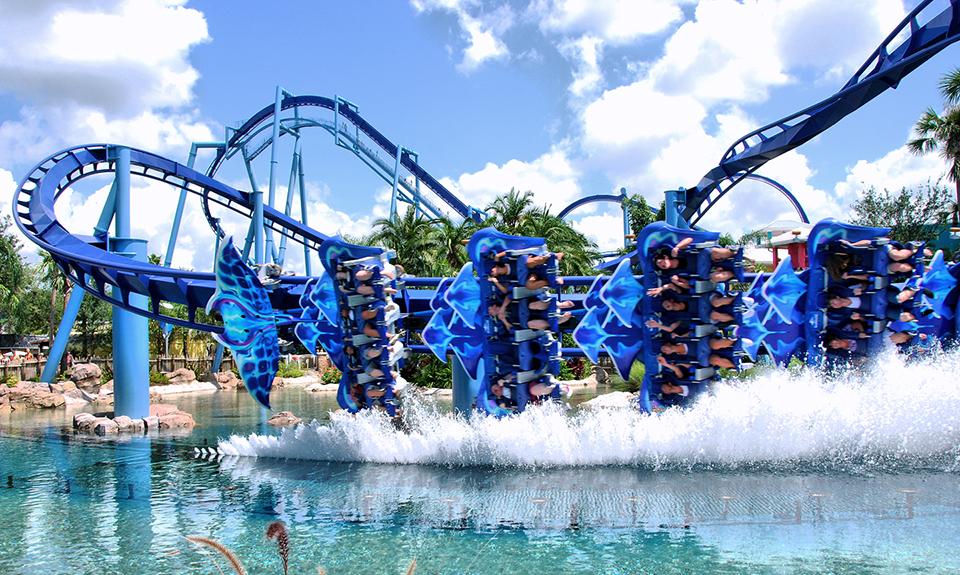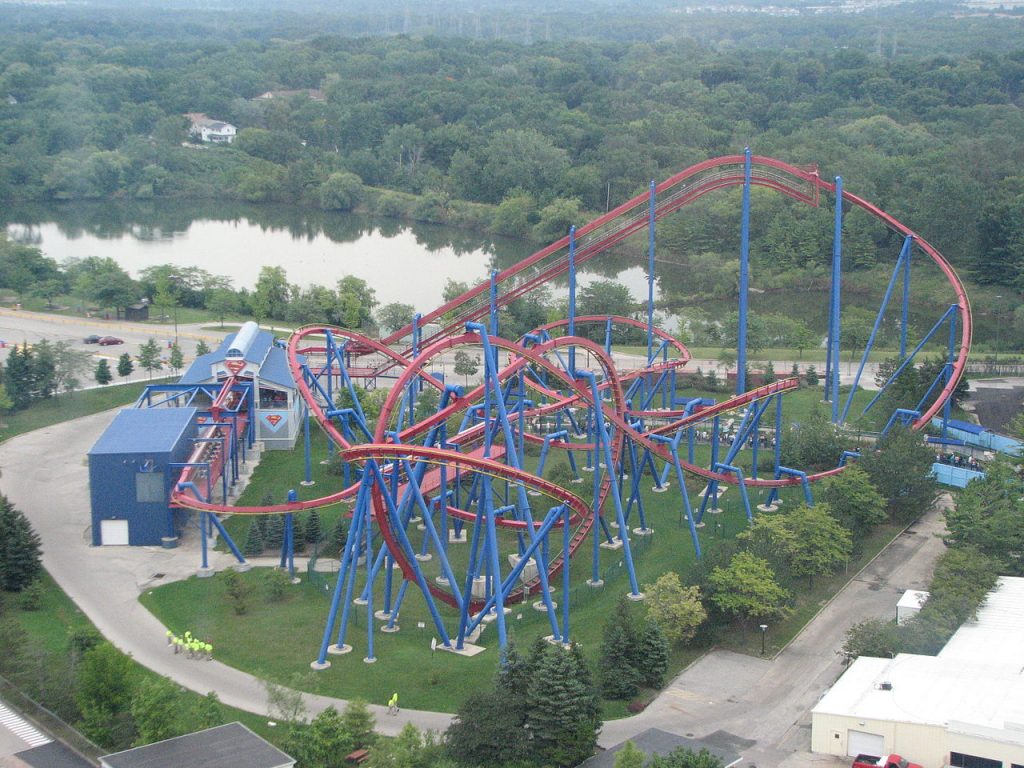
A flying roller coaster is a type of roller coaster meant to simulate the sensations of flight by harnessing riders in a prone position during the duration of the ride. The roller coaster cars are suspended below the track, with riders secured such that their backs are parallel to the track. Flying roller coasters come in a variety of sizes and designs depending on the intended demographic for the ride. Some flying roller coasters are intended for children and, thus, are relatively slow and gentle; others are meant for older children and adults and can be very fast and intense.
The flying roller coaster is a relatively new concept. The world’s first flying roller coaster was Skytrak Total, built in Manchester, United Kingdom at the Granada Studios Tour in 1997. The Skytrak used a single-passenger car. Riders would climb into the car in much the same fashion as climbing a ladder, then the car would be raised up to the track before being dispatched. The single-passenger design kept the ride’s capacity low, at only 240 riders per hour. The park, and Skytrak itself, were short-lived, both closing in 1998, but nevertheless the ride was the first of its kind.
Dutch roller coaster manufacturer Vekoma constructed the first large-scale flying roller coaster, Stealth, for California’s Great America in 2000. Nicknamed the ‘Flying Dutchman’ by Vekoma, Stealth featured a higher-capacity train with four-across seating. Riders load the trains in an upright sitting position, facing the rear of the train. After the train is fully loaded, a mechanism in the station lower the seats to the track, with the riders on their backs facing the ceiling. After cresting the lift hill, the track twists 180 degrees to flip the riders into the flying position for the rest of the ride. Just prior to reaching the roller coaster’s final brake run, the track twists again, such that riders are lying on their backs facing upward. After reaching the station, the seats are raised back to loading position.
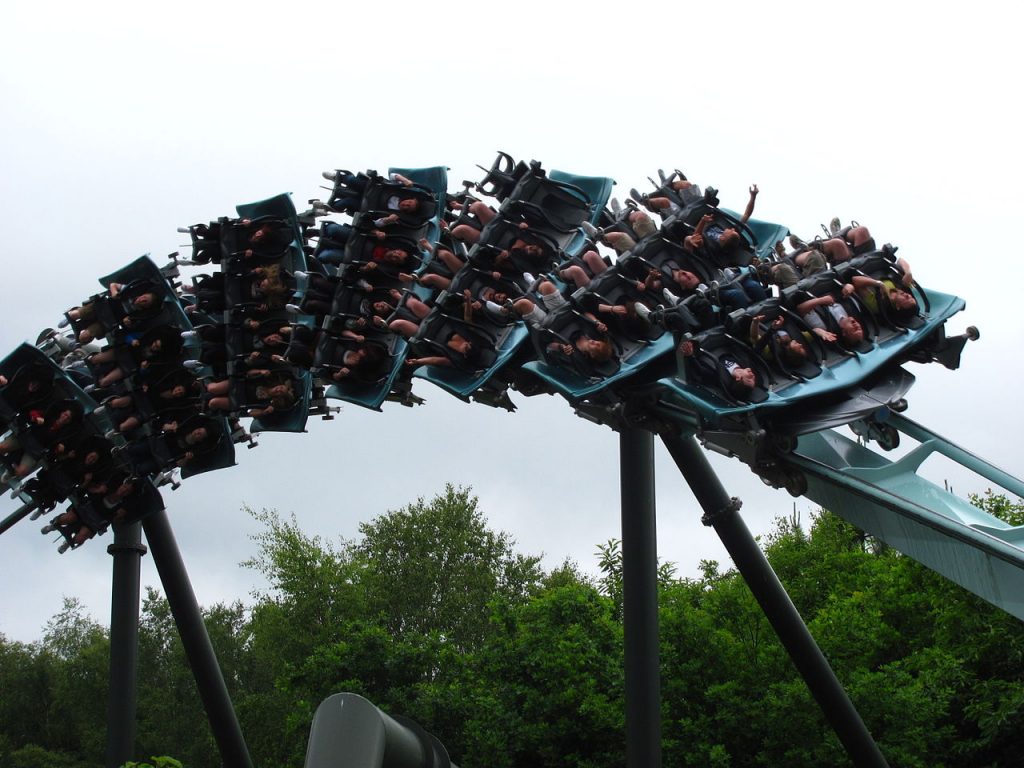
Air, located in te Forbidden Valley area of the Alton Towers themepark in the UK, was on 16 March 2002 the first B&M flying coaster to open to the public.
Guests ride in a prone position lying chest down and experience the feeling of flight by “flying” close to the ground, under footpaths, and narrowly past trees and rocks.
In a B&M flying coaster, the rider takes a sitting position with their legs dangling in a similar fashion to B&M’s inverted roller coaster. Mechanisms in the station lift the car up to the track, placing passengers in a flying position for the duration of the ride.
Later that same year Six Flags opened their first B&M flying coaster, Superman: Ultimate Flight at Six Flags Over Georgia.
Just like Air, this flying coaster has a dual loading station. The following 2 Superman: Ultimate Flight coasters that would open in 2003 at Six Flags Great Adventure and Six Flags Great America don’t have this dual loading station.
But all 3 flying coaster do have a new inversion as their signature element, a pretzel loop.
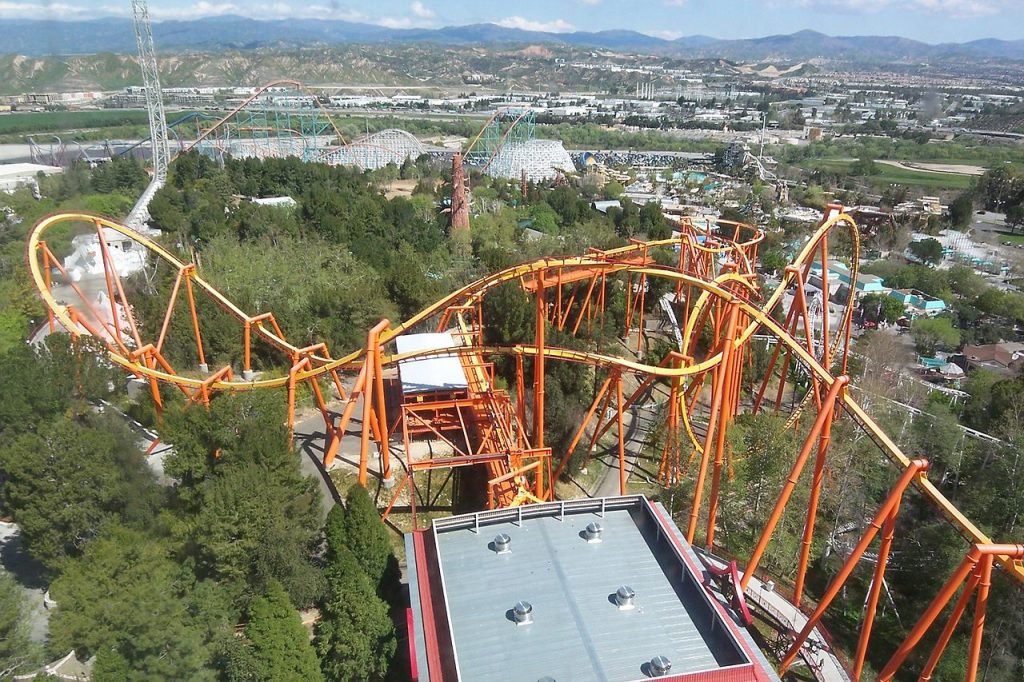
In 2006 Tatsu at Six Flags Magic Mountain was the next B&M flying coaster to open.
Tatsu was the world’s tallest, fastest and longest flying coaster when opened to the public.
It is the only flying roller coaster to feature a zero-gravity roll; and has the world’s highest pretzel loop.
In 2016 the record for longest flying coaster went to Universal Studios Japan when they opened The Flying Dinosaur.
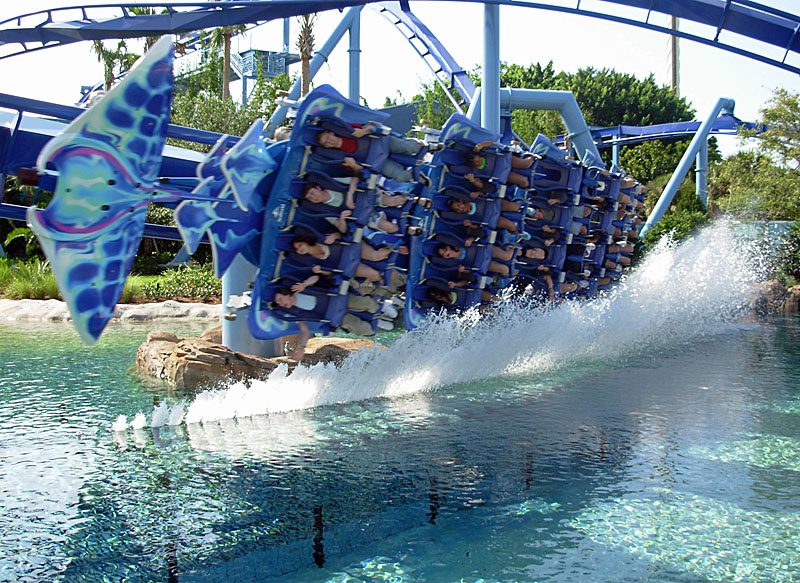
In 2009 SeaWorld Orlando opened Manta, their largest single investment in an attraction till that date.
Manta’s queue is designed to resemble a seaside village decorated with mosaics and artwork inspired by rays. Within the attraction’s 4-acre (16,000 m2) site are ten aquaria containing 184,000 US gallons of water. Approximately 3,000 animals representing over 60 species are visible—including over 300 rays, such as cownose rays and spotted eagle rays. Other creatures on display include sea horses, leafy seadragons and tropical fish.
The signature element of the ride is the splash element. This is right after the midcourse brake run, where the train then drops to a point just above a body of water, at the same time making a 270-degree right turn, where water jets spray up near the train to produce the effect of the train actually hitting the water.
For 2017 and 2018 no new B&M flying coasters are under construction
